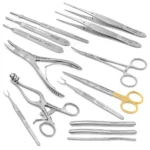Aging is a natural part of life, but for many people, the visible signs of aging can lead to a desire for rejuvenation. One of the most effective and time-tested solutions to address sagging skin, deep wrinkles, and facial volume loss is facelift surgery. Especially in regions like the Middle East, where aesthetic treatments have gained popularity, Facelift Surgery in Oman has become a sought-after option for individuals looking to turn back the clock on their appearance.
This article dives into what facelift surgery involves, how it works, and what patients in Oman should know before considering the procedure.
Understanding Facelift Surgery
A facelift, medically known as rhytidectomy, is a cosmetic surgical procedure designed to reduce signs of aging on the face and neck. It primarily addresses sagging skin, deep folds around the nose and mouth, jowls, and loose skin on the neck.
The goal of the procedure is not to change one’s fundamental appearance but to restore a more youthful contour by tightening skin, repositioning facial tissues, and sometimes removing excess fat. A well-executed facelift should leave the patient looking refreshed, not overdone or artificial.
How Does a Facelift Work?
Facelift surgery involves lifting and tightening the underlying facial muscles and tissues, then re-draping the skin to smooth out wrinkles and remove excess. Here’s a simplified breakdown of the process:
-
Anesthesia: Patients typically receive general anesthesia or intravenous sedation to ensure comfort throughout the procedure.
-
Incision Placement: The surgeon makes discreet incisions, usually along the hairline, behind the ears, or under the chin, depending on the areas being treated.
-
Tissue Repositioning: The deeper layers of the face are lifted and tightened. This may involve repositioning fat pads, tightening muscles (SMAS layer), and addressing facial volume.
-
Skin Redraping: The skin is gently pulled over the newly shaped contours and any excess skin is trimmed away.
-
Closing Incisions: The incisions are closed with sutures or skin adhesives, leaving minimal scarring.
Some patients may combine a facelift with other procedures such as a brow lift or eyelid surgery for more comprehensive rejuvenation.
Why Choose Facelift Surgery in Oman?
Oman has emerged as a hub for medical tourism, particularly in the field of cosmetic surgery. Facelift surgery in Oman offers patients access to modern medical facilities, trained surgeons, and a standard of care that meets international benchmarks.
Several factors make Oman an appealing location for such treatments:
-
Quality of healthcare: Hospitals and clinics in Oman maintain high standards, using the latest techniques and equipment.
-
Cultural alignment: Many Omani and GCC residents prefer undergoing treatments within the region where cultural norms and privacy expectations are better understood.
-
Affordability: While prices vary, facelift surgery in Oman is often more cost-effective compared to the same procedure in Western countries.
What to Expect Before, During, and After Surgery
Pre-Surgery Consultation
Before undergoing a facelift, a thorough consultation is essential. The surgeon will assess the patient’s medical history, skin condition, facial structure, and aesthetic goals. Photos may be taken for comparison and planning purposes.
It’s also a time to ask questions, discuss risks, and determine whether the procedure aligns with the patient’s expectations.
The Procedure Itself
The surgery typically takes between 2 to 4 hours, depending on the complexity. It may be performed as an outpatient procedure, though some patients stay overnight for observation.
Modern facelift techniques are designed to minimize discomfort and promote quicker healing. Local anesthesia combined with sedation is also an option for certain patients.
Recovery and Results
Recovery varies by individual, but here’s a general timeline:
-
Week 1: Swelling and bruising are most noticeable. Patients should rest with their head elevated and avoid strenuous activities.
-
Week 2: Most of the bruising subsides. Stitches are usually removed within the first 7–10 days.
-
Week 3–4: Swelling continues to decrease. Many patients feel comfortable returning to work and social activities.
-
Months 2–3: Final results become more visible as tissues settle.
Scars are minimal and fade over time, especially when post-operative care instructions are followed closely.
Who Is a Good Candidate for a Facelift?
Not everyone is suited for facelift surgery. Ideal candidates typically:
-
Are in good physical and mental health
-
Have noticeable facial aging, such as sagging cheeks or jowls
-
Have skin with some elasticity
-
Do not smoke (or are willing to quit before and after surgery)
-
Have realistic expectations
Age is not a strict factor. Some individuals in their 40s may seek a mini-facelift, while others in their 60s or older can benefit from a full facelift.
Benefits of Facelift Surgery
Facelift surgery can have profound aesthetic and emotional benefits, including:
-
A more youthful and refreshed appearance
-
Smoother skin and defined facial contours
-
Increased self-confidence
-
Long-lasting results (often 7–10 years or more)
When performed by a skilled surgeon, the results are natural-looking and subtle, helping patients look like a younger version of themselves.
Risks and Considerations
As with any surgical procedure, a facelift carries risks, although complications are rare when performed by experienced professionals. Potential risks include:
-
Scarring
-
Hematoma (collection of blood under the skin)
-
Infection
-
Nerve injury (usually temporary)
-
Anesthesia reactions
Discussing all possible risks and post-surgical expectations with the surgeon is crucial before proceeding.
Frequently Asked Questions
1. How long do facelift results last?
Most facelift results last between 7 to 10 years. While the aging process continues, patients often look younger than if they had never undergone the surgery.
2. Is facelift surgery painful?
Discomfort is expected after surgery, but it’s usually well-managed with prescribed pain medication. Most patients describe the sensation more as tightness than pain.
3. Are there non-surgical alternatives to a facelift?
Yes, treatments like dermal fillers, Botox, and skin-tightening devices can offer temporary improvement, but they don’t provide the same dramatic or long-lasting results as a surgical facelift.
4. Can men get facelift surgery in Oman?
Absolutely. An increasing number of men are opting for facelifts to maintain a youthful appearance, particularly for professional and personal reasons.
5. What is a mini facelift, and how is it different?
A mini facelift targets mild to moderate sagging in the lower face. It involves shorter incisions and a quicker recovery time compared to a full facelift, making it ideal for younger patients or those seeking subtle changes.
6. When can I return to work after a facelift?
Most people return to work within 2 to 3 weeks, depending on the extent of the surgery and their healing process. Light activities can resume earlier with the surgeon’s approval.
Final Thoughts
Facelift surgery remains one of the most effective ways to achieve long-lasting facial rejuvenation. For individuals exploring cosmetic options, facelift surgery in Oman offers a blend of expert care, advanced technology, and culturally sensitive services. Whether you’re seeking to look as young as you feel or simply restore natural facial contours, a facelift can be a life-enhancing step toward renewed confidence.
Always consult with a qualified medical professional to determine whether this procedure is right for you and to ensure you receive the best possible outcome tailored to your unique features and goals.












